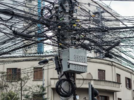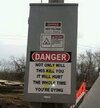(Snip). It’s been my experience, that contrary to, popular belief (and I am anti govt) hat the inspectors are not your enemy. I took over as the GC on my parents home (as a trustee, I was also a legal owner and could use the homeoner exemption) and he flagged a number of little things that I wouldn’t have thought of like the range needing a lock to keep it from tipping forward. Easy fixes. Be polite, and all is well.you know that most jurisdictions are having up to 20 inspections per man per day
when we put the kiln in at our house in high point, I pulled a permit. 60 amp circuit, not usual. I did the load calculations against the service and we were good to go. A friend / coworker helped with the work. The inspector came out and said this is a first, “ I can’t find anything to complain about, your husband does good work”.






